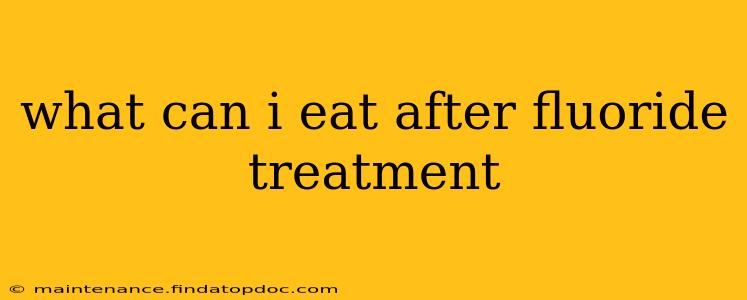What Can I Eat After a Fluoride Treatment?
Fluoride treatments, whether professional applications at the dentist's office or at-home treatments, aim to strengthen tooth enamel and prevent cavities. However, what you eat and drink immediately following a fluoride treatment is crucial for its effectiveness. The timing and types of food and beverages can impact how well the fluoride integrates with your teeth. Let's explore the best dietary choices after a fluoride treatment.
What should I avoid after a fluoride treatment?
Immediately after a professional fluoride treatment at your dentist's office, you'll generally be asked to avoid eating or drinking for at least 30 minutes. This allows the fluoride to properly adhere to your teeth. Beyond that initial 30-minute window, however, certain foods and beverages should be avoided or consumed with caution:
-
Highly acidic foods and drinks: These include citrus fruits (oranges, lemons, grapefruits), sodas, sports drinks, and even some fruit juices. Acids can wash away the fluoride, reducing its effectiveness. If you must consume acidic beverages, rinse your mouth with water afterwards.
-
Colored or staining foods and drinks: Coffee, tea, red wine, and brightly colored candies can stain your teeth. Since your enamel may be slightly more porous after a fluoride treatment (though temporarily), these can potentially cause more staining than usual. It's best to avoid them for a few hours after treatment.
-
Sticky or sugary foods: Sticky foods like caramels, gummy candies, and even dried fruits can cling to your teeth, potentially interfering with the fluoride's absorption. Sugary foods also feed the bacteria in your mouth that contribute to cavities, undermining the benefits of the treatment.
-
Hot foods and drinks: While not directly affecting fluoride absorption, very hot foods and drinks can be uncomfortable shortly after a fluoride treatment, especially if it involved a tray application.
What can I eat after a fluoride treatment?
The best foods to consume after a fluoride treatment are generally mild, neutral, and easy to clean off your teeth:
-
Plain water: This is the ideal choice. Water helps to rinse away any lingering fluoride and keep your mouth clean.
-
Plain yogurt: Provides beneficial probiotics and is generally gentle on teeth.
-
Soft fruits and vegetables: Mashed bananas, well-cooked applesauce, or soft-cooked carrots are good options. Avoid anything overly acidic, though.
-
Broth-based soups: These are generally mild and easy to consume.
-
Plain bread: Avoid anything overly sugary or sticky.
Essentially, stick to bland, neutral foods for several hours after your treatment.
How long should I wait before eating after a fluoride treatment?
As mentioned before, your dentist will likely recommend waiting at least 30 minutes after a professional in-office treatment before eating or drinking anything. For at-home fluoride treatments, follow the product instructions carefully. While the strict 30-minute window might not be necessary for at-home treatments, it's still best to wait at least an hour before consuming anything other than water.
Can I brush my teeth after a fluoride treatment?
Generally, it's recommended to avoid brushing your teeth for at least 30 minutes after a professional fluoride treatment to allow the fluoride to be absorbed properly. However, for at-home treatments, always check the product instructions, as some might recommend brushing after a certain amount of time.
What are the benefits of fluoride treatment?
Fluoride treatments offer several key benefits, including strengthening tooth enamel, making teeth more resistant to acid attacks that cause cavities, and potentially reversing early stages of tooth decay.
By following these guidelines and making conscious food and drink choices after your fluoride treatment, you'll maximize its effectiveness and ensure your teeth receive optimal protection. Remember to always follow your dentist's specific recommendations.
